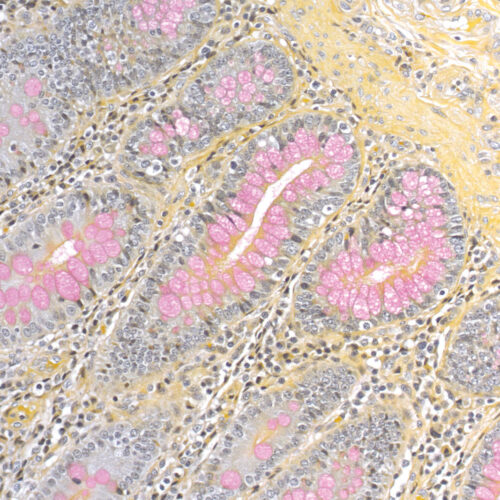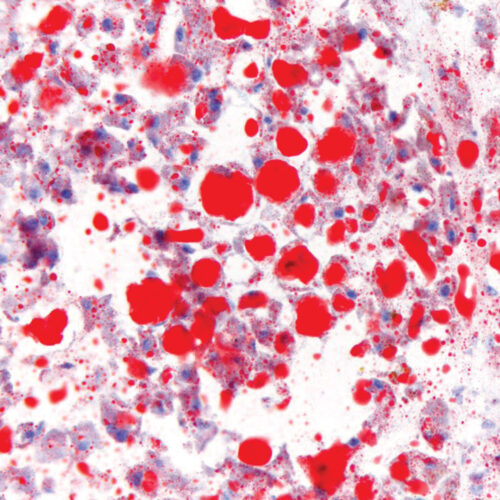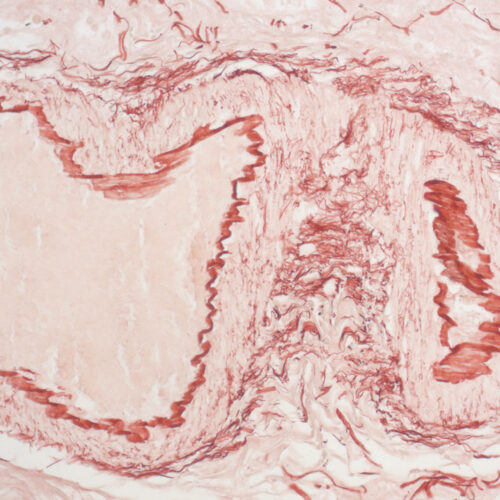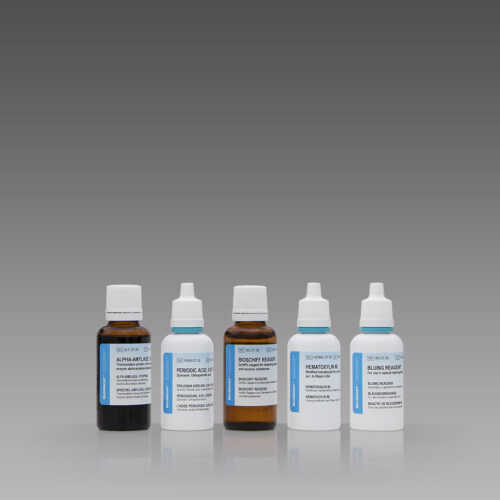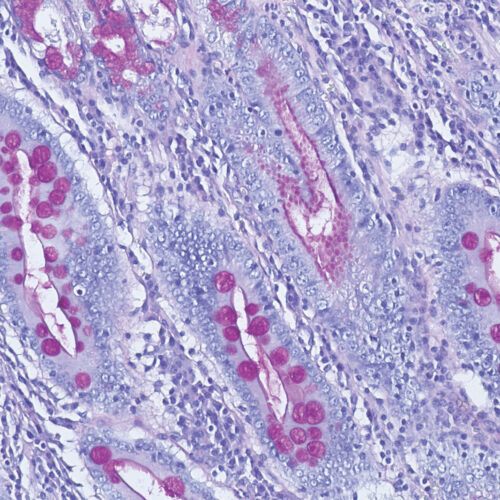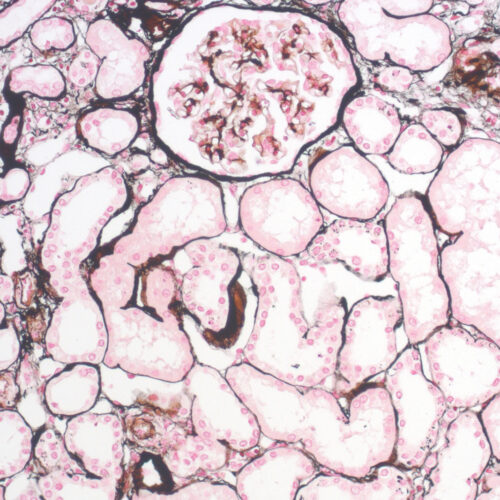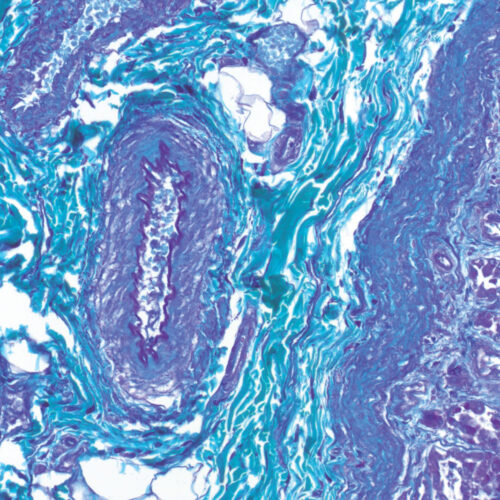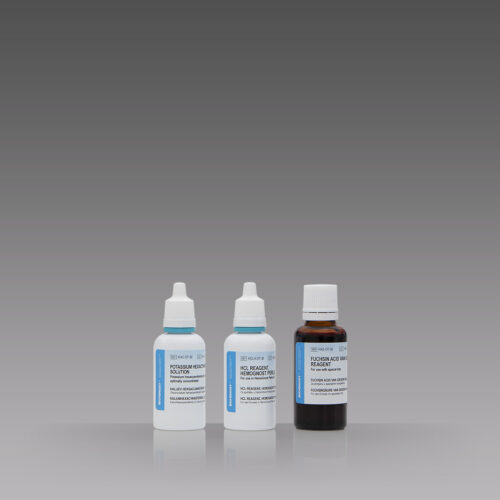Special staining kits for histology and citology
-
Mucicarmine kit
Mucicarmine kit is often used to identify primary tumor sites, distinguishing mucin-negative undifferentiated squamous cell lesions from mucin-positive adenocarcinomas. It can also be used as indicative of diseases such as asthma, bronchitis, chronic obstructive pulmonary disease and cystic fibrosis.
-
Oil Red O kit
Four-reagent kit for selective staining and detection of fat cells and neutral fats according to Johnson. It can be used with frozen sections and fresh smears to detect obesity-linked pathologies such as dyslipidemia and diabetes type.
-
Orcein kit
Five-reagent kit for visualization of hepatitis B surface antigen (HBsAg) seen as viral inclusion bodies in hepatocytes, for elastic fibers and copper associated protein in tissue sections. It can be used with frozen sections.
-
P.A.S. Diastase kit
Six-reagent kit for detecting glycogen and mucopolysaccharide structures mostly in liver. The diastase digestion procedure, followed by P.A.S. staining, is useful in the evaluation of glycogen storage disease.
-
P.A.S. kit
Five-reagent Periodic Acid-Schiff kit for staining aldehydes, muccopolysaccharides, mucoproteins and lymphocytes according to Hotchkiss-McManus. P.A.S. staining may also be used for the demonstration of fungal organisms in tissue sections.
-
P.A.S.M. / Jones kit, stabilized
Seven-reagent Periodic Acid Silver Methenamine kit for staining kidney glomerular basement membranes. Kit includes red counterstain which provides visually rich contrast to target structures stained black.
-
Paraldehyde Fuchsin kit
Seven-reagent kit according to Gomori for detecting pathological changes in elastic fibers. It also stains mast cell granules, beta granules in pancreatic islets, neurosecretory material, mast cell granules and beta cells in the pituitary gland.
-
Perls-Van Gieson kit
Three-reagent kit for the detection of reactive ferric (Fe3+) ions in cells (Prussian blue/Berlin blue reaction) with Fuchsin Acid Van Gieson counterstain to differentiate collagen from connective tissue.


